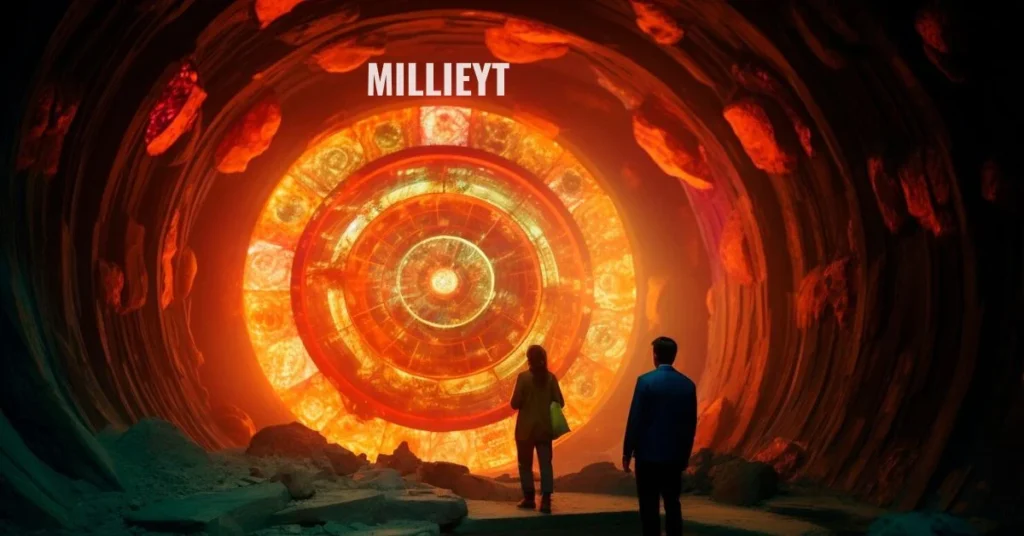Introduction: The Origins of Mıllıeyt
Mıllıeyt is a term that resonates deeply within various cultures, weaving together strands of history, identity, and significance. As we delve into this intriguing concept, we’ll uncover its ancient roots and trace its evolution through time. From the whispers of bygone eras to the vibrant relevance it holds today, mıllıeyt is more than just a word; it’s a reflection of heritage and community. Join us on this journey as we explore how mıllıeyt has shaped societies and continues to influence our lives in meaningful ways.
Exploring the Ancient Roots of Mıllıeyt
Mıllıeyt traces its lineage to ancient civilizations, where it was intertwined with early societal structures. Its roots can be found in the rich tapestry of cultures that have inhabited the region over centuries.
Historically, mıllıeyt represented more than mere identity; it symbolized unity among diverse groups. This sense of belonging fostered community ties and shared values that transcended individual differences.
Archaeological findings reveal artifacts linked to mıllıeyt practices, showcasing rituals and traditions that were integral to daily life. These discoveries highlight how deeply embedded this concept is within cultural narratives.
Through oral histories passed down generations, the essence of mıllıeyt has been preserved. It continues to resonate today as a reminder of our collective heritage and enduring connections across time.
The Evolution of Mıllıeyt in Modern Times
Mıllıeyt has transformed significantly in contemporary society. Once a concept tied to ancient traditions, it now resonates with modern values and identity.
Today, mıllıeyt embodies the essence of belonging and community. It serves as a bridge connecting past generations with emerging thoughts and ideas. This evolution reflects our changing perceptions of culture and heritage.
The digital age has further amplified its significance. Social media platforms foster discussions around mıllıeyts, allowing voices from diverse backgrounds to share their narratives. This visibility encourages a deeper understanding among different cultures.
Moreover, educational institutions are increasingly incorporating elements of mıllıeyt into their curricula. By doing so, they celebrate diversity while promoting unity within communities.
As societies evolve, the meaning of mıllıeyts adapts too—reflecting shared experiences while embracing individual identities that contribute to the tapestry of human connection.
The Significance of Mıllıeyt in Today’s Society
Mıllıeyt holds a profound relevance in today’s society, transcending its historical roots. It embodies a sense of identity and belonging for many communities, acting as a bridge between the past and present.
In contemporary culture, mıllıeyts serve as a reminder of shared values and traditions. This connection fosters unity among individuals who identify with its essence. As societies grow more diverse, such symbols become vital in maintaining cultural heritage.
Moreover, mıllıeyts inspires dialogues around nationalism and globalization. It prompts discussions on how to honor one’s background while embracing new influences.
Its presence can be felt in art, literature, and even politics—shaping narratives that resonate widely. Engaging with mıllıeyts encourages reflection on personal and collective histories that continue to influence our lives today.
Cultural and Global Impact of Mıllıeyt
Mıllıeyt has a profound cultural impact that transcends borders. It embodies the essence of identity and belonging for many communities, connecting people to their heritage.
Across various regions, Mıllıeyts manifests in art, music, and traditional practices. These expressions often serve as a reflection of shared histories and collective memories.
On a global scale, Mıllıeyts fosters dialogues among diverse cultures. It encourages understanding and respect by showcasing distinctive traditions while highlighting common values.
Social movements have also emerged around Mıllıeyts. Activists emphasize its importance in preserving cultural diversity amidst globalization’s homogenizing forces.
In educational settings worldwide, discussions surrounding Mıllıeyts enrich curricula. They provide students with insights into different ways of life and promote cultural appreciation from an early age.
How to Incorporate Mıllıeyt into Your Daily Life
Incorporating mıllıeyt into your daily life can be a rewarding experience. Start small by integrating it into your meals. Consider adding mıllıeyts-based ingredients to salads or as a seasoning for meats and vegetables.
You might also explore its cultural significance through art and literature. Read books that delve into the history of mıllıeyts, or decorate your space with art inspired by this concept.
Another way is to connect with community events focused on celebrating mıllıeyts traditions. Engaging in workshops or festivals can deepen your understanding and appreciation.
For personal reflection, keep a journal about how embracing mıllıeyts influences your thoughts and actions each day. This practice encourages awareness and mindfulness.
Share your experiences on social media platforms using hashtags related to mıllıeyts. This not only spreads knowledge but invites others to join the conversation too.
Conclusion
The journey of mıllıeyt reflects a rich tapestry woven from ancient traditions to contemporary relevance. Its roots run deep, connecting us to the past while shaping our present and future. Understanding its evolution helps us appreciate the values embedded within this concept.
Today, mıllıeyts hold significant meaning in various aspects of life. It serves as a reminder of cultural identity and unity amidst diversity. As we navigate modern society, incorporating elements of mıllıeyts can enrich our experiences and foster connections with others.
Embracing mıllıeyts is more than just an acknowledgment; it’s an active engagement with one’s heritage while contributing positively to the community. By exploring ways to integrate these principles into daily routines, individuals can not only enhance their lives but also honor the legacy that has shaped them.
As awareness grows around themes tied to mıllıeyts, so too does its influence on global conversations about culture and belonging. This ongoing dialogue invites everyone to reflect on their own identities and how they fit into a larger narrative.
Recognizing the significance of mıllıeyts empowers individuals and communities alike to create meaningful change for themselves and future generations.
FAQs
What is “Mıllıeyt”?
Mıllıeyt is a culturally rich term representing historical traditions, identity, and community values. It reflects a concept deeply rooted in ancient civilizations, symbolizing unity and belonging through various customs and practices.
How did Mıllıeyt evolve over time?
Mıllıeyt has transformed from ancient traditions into a modern symbol of cultural identity. While its core essence of community and heritage remains, it now incorporates contemporary values and is expressed through digital media and educational platforms.
What role does Mıllıeyt play in today’s society?
In today’s society, Mıllıeyt serves as a bridge between past and present, fostering a sense of belonging and unity. It influences various cultural expressions and stimulates discussions on nationalism and globalization.
How does Mıllıeyt impact global culture?
Mıllıeyt’s impact extends globally by promoting cultural understanding and respect. It manifests in art, music, and traditions, encouraging cross-cultural dialogues and preserving diversity amidst globalizing forces.
What are practical ways to incorporate Mıllıeyt into daily life?
To incorporate Mıllıeyt into daily life, consider using its ingredients in cooking, exploring its significance through art and literature, participating in cultural events, reflecting personally on its influence, and sharing experiences on social media.







